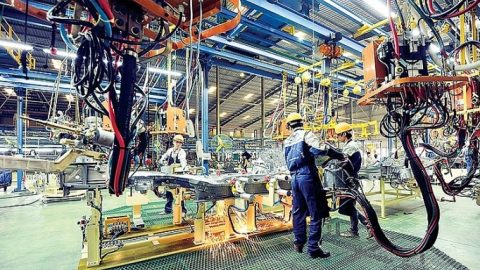
Applying advanced science and technology in production
A topic that may not be in the top of the Vietnam’s typical economic events in the 2018 rankings but foretold a good future. It is the fact that Vietnam has not only reached the Top 11 fastest growing economies in the world in the past 20 years but also be the one of 20 largest economies in the world in 2050.
Optimism in the short and long term
The report “Outstanding success: High-growth emerging economies and backed businesses” by McKinsey Global Institute (MGI) held in Hanoi in September 2018 selected 18 economies with outstanding success within 71 surveyed economies.
Among those 18 economies, MGI chose 7 economies that grew GDP per capita by more than 3.5% in 50 years, from 1965 to 2016, including: China, Hong Kong, Indonesia, Malaysia , Singapore, South Korea and Thailand. The remaining 11 economies, Azerbaijan, Belarus, Cambodia, Ethiopia, India, Kazakhstan, Laos, Myanmar, Turkmenistan, Uzbekistan and Vietnam, are considered to have faster growth rates, in shorter time periods, reaching 5 % per year for 20 years from 1996 to 2016.
PwC’s update report 2018 – one of the four largest auditing firms in the world – shows that, if two years ago, the firms ranked Vietnam at the 22nd position among the world’s largest economies in 2050, at the end of 2018, PwC said that by 2050, Vietnam’s position will be 20. “In terms of growth rate, Vietnam, India and Bangladesh will be the fastest growing economies from now on to 2050, with an annual growth rate of about 5% ”- PwC acknowledged.
That is the story of the future, long term. Even with short-term vision, Vietnam’s rapid growth story has become a common point of domestic and foreign economic experts. The World Bank (WB) and the Asian Bank (ADB) all adjusted the growth rate of Vietnam, reaching from 6.70 to 6.80%.
As for domestic experts, the final report of 2018 from the National Financial Supervisory Commission has chosen the number 7% to figure the Vietnam’s GDP growth this year, which is higher than the expected level. ants up to 0.3%.
Meanwhile, experts from the National Center for Socio-Economic Information and Forecasting (Ministry of Planning and Investment) also agreed with the 7% increase of 2018 while giving the script for GDP of 2019 and 2020. Accordingly, with the base scenario, GDP in 2019 will increase by 6.8% and by 2020 by 7%. Moreover, with a favorable scenario, GDP in 2019 is 7.02% and in 2020 it is 7.2%.
Key factor
A big question is that while the old growth drivers such as cheap labor costs, relying heavily on credit growth, raw product exports are all “critical”, Vietnam will rely on any new motivation to maintain momentum for the economic growth “train”?
Right at the regular meeting of the Government discussing the work of the Sub-Committee for Economic and Social Affairs in the recent XIII Congress, the Prime Minister Nguyen Xuan Phuc – Head of the Subcommittee – asked questions about above content. “Must analyze more deeply the characteristics of the current Vietnamese economy in order to have a better and more suitable solution” – The Prime Minister said. According to the Prime Minister, these characteristics could be urban development, private and agricultural economic development.
More specifically, the Prime Minister make an example: Currently, there is a large surplus of labor in the agricultural sector (up to 42% of workers working in this area). This is the cause of low labor productivity. “So, together with the current private economy, individual economy and agricultural labor problem, we must solve the problem of productivity through reallocation of labor resources in Vietnam” – the Prime Minister raised the issue.
The frankness of the head of the Government is also shared by domestic and foreign experts. Ms. Dinh Thi Quynh Van – General Director of PwC Vietnam – said that in order to succeed in the “playground” of the world economy, Vietnam needs for growth based on more sustainable, more complete institutionsx economic restructuring efforts, and have a better quality of education – training to make employees can contribute effectively for a long-term economic growth.
Meanwhile, PwC expert Anu Madgavkar paid attention to two key factors that created remarkable growth. First, better economies tend to develop a growth support agenda for the public and private sectors to boost productivity, increase income and demand. Secondly, the prominent role of large enterprises in promoting GDP per capita growth. “If Vietnam has not done or cared, then do it, please care. If you have done it, you have cared, you need to do better and care more”, said Anu Madgavkar.
Still according to this expert, Vietnam is one of the very few countries in the world that has many technological innovations, improving productivity and increasing competitiveness. The problem is that it needs to be further promoted in the context of the Industrial Revolution 4.0.